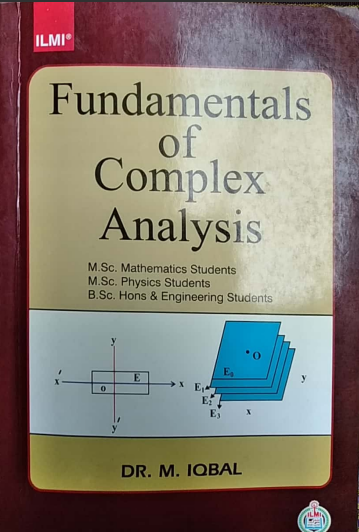What is Complex Analysis?
Complex Analysis is a branch of mathematics that studies functions of complex numbers. It involves analyzing the properties and behaviors of functions that take complex numbers as input and produce complex numbers as output. This area of mathematics is essential for understanding many phenomena in physics, engineering, and applied mathematics.
Key Concepts:
Complex Numbers: Numbers of the form z = a + bi, where a and b are real numbers, and i is the imaginary unit (i² = -1).
Analytic Functions: Functions that are complex differentiable at every point in their domain. They are smooth and have a derivative at every point.
Contour Integration: The process of integrating complex functions along a path (contour) in the complex plane.
Cauchy-Riemann Equations: Conditions for a function to be analytic. They relate the partial derivatives of the real and imaginary parts of the function.
Residue Theorem: A powerful tool for evaluating integrals of complex functions by summing residues at singularities within a contour.
Singularities: Points where a complex function fails to be analytic (e.g., poles or essential singularities).
Laurent Series: A series expansion of a complex function that can handle singularities.
Conformal Mapping: A function that preserves angles and shapes (but not necessarily sizes) in the complex plane.
Applications:
Fluid Dynamics: Used to model the flow of fluids and gases.
Electromagnetic Theory: Helps in solving problems involving electric and magnetic fields.
Control Theory: Used in systems and stability analysis.
Signal Processing: Applied in analyzing signals in both time and frequency domains.
Complex Analysis is a powerful tool for solving problems in engineering, physics, and mathematics, providing deep insights into the behavior of functions and systems.

Complex Analysis
Elias M. Stein & Rami Shakarchi

Complex Analysis
Elias M. Stein & Rami Shakarchi

Complex Variables with Applications
S. Ponnusamy Herb Silverman

Complex Analysis
Iqra Liaqat

Complex Analysis
Mittag Leffler's Expension Theorem

Complex Variables and Applivations
James Ward Brown

Complex Variables
Schaums

Fundamentals of Complex Analysis
Z R Bhatti
Dr. Iqbal: Fundamentals of Complex Analysis and its Applications _Chapter wise
Dr. Iqbal: Fundamentals of Complex Analysis and its Applications _Chapter wise
Complex Analysis handwritten Notes
